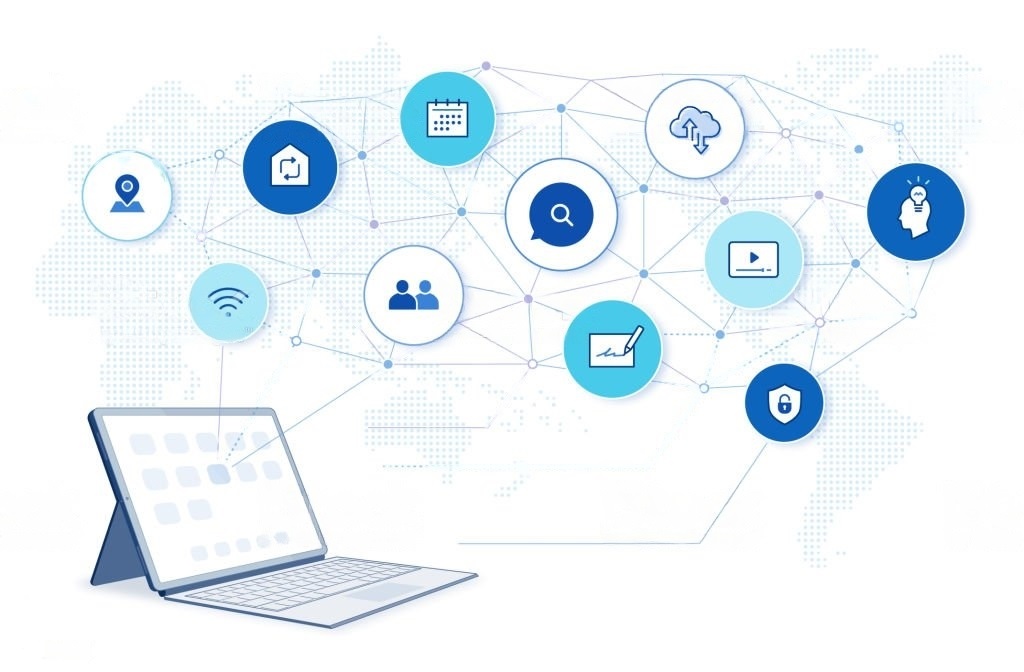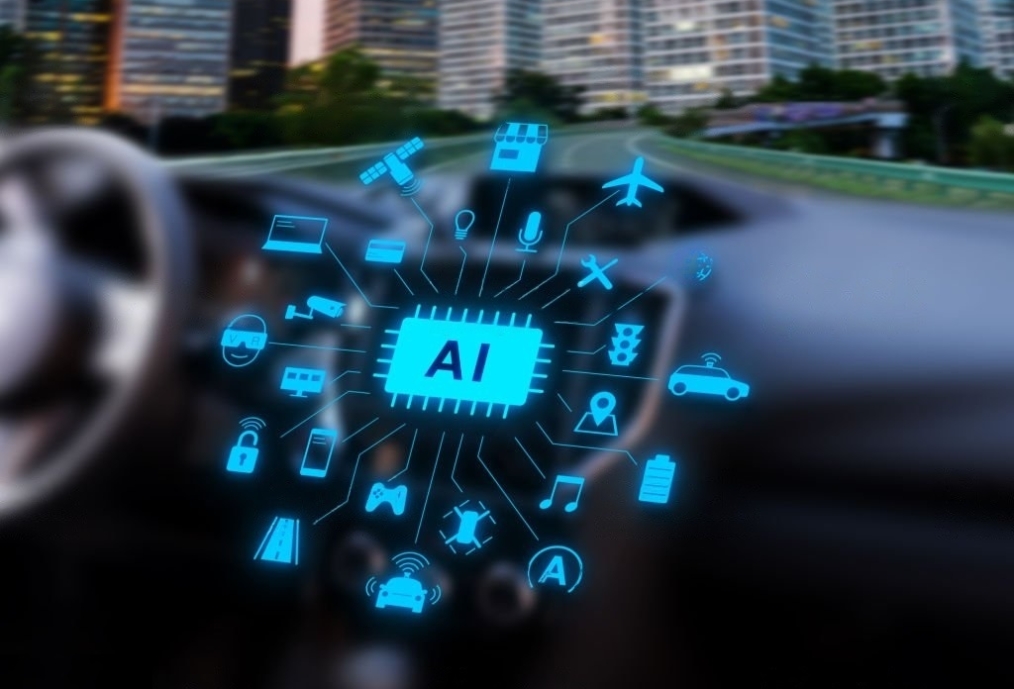Hi there!
Are you an executive, business owner or a CEO, then this is for you, as we will explore the top 5 most impactful and influential technologies in the field of Artificial Intelligence (AI) from a business standpoint without diving deep in the technical aspect of AI.
AI is changing our lives and work and will only continue to grow. Keeping up with the latest and most powerful AI technologies is challenging. AI automates tasks, improves predictions, and boosts decision-making, making organizations more efficient. It will shape the future and create new growth opportunities.
This is your chance to gain a comprehensive understanding of the latest and most innovative technologies in the field of Artificial Intelligence.
By staying up to date with the cutting-edge technologies, you can position yourself as a leader in the field and stay ahead of the curve in this rapidly evolving landscape.
Table of Contents
- What is Artificial Intelligence (AI)?
- 1. Computer Vision
- 2. Deep Learning:
- 3. Reinforcement Learning
- 4. Natural Language Processing (NLP)
- 5. Robotics Process Automation (RPA)
- Summary
What is Artificial Intelligence (AI)?
Artificial Intelligence is a rapidly growing field that involves the development of computer systems that can perform tasks that would typically require human intelligence, such as understanding natural language, recognizing images, making predictions, and solving complex problems.
AI is a game-changer that has the potential to transform entire industries and revolutionize the way we do business. And it is our responsibility as business leaders to understand the opportunities and challenges that come with this transformative technology and to leverage it in a way that creates value for our customers and society as a whole.

This article consists of five sections, each dedicated to exploring one of the most transformative and game-changing technologies in the field of Artificial Intelligence.
And hopefully that helps you come up with some ideas how you can use computer vision in your company and in your industry.
So, let’s get started!
1. Computer Vision
Computer Vision is a subfield of Artificial Intelligence (AI) that deals with enabling computers to interpret and understand visual information in the same way that humans do. It involves the development of algorithms and models that can recognize objects, interpret images and videos, and perform tasks such as image classification, object detection, and image segmentation.
Some facts about computer vision include:
- It is a rapidly growing field with increasing applications in areas such as healthcare, retail, and autonomous vehicles.
- It has the potential to automate tedious and time-consuming tasks, freeing up human time for more creative and strategic activities.
- Advancements in computer vision have been driven by the availability of large amounts of annotated data and improvements in deep learning algorithms.
A real-world example of computer vision is its application in facial recognition technology, object detection, identifying individuals in crowd surveillance systems, self-driving cars, where computer vision is used to perceive and understand the environment and make decisions about navigation and many more.
The potential for computer vision is vast and continues to grow as the technology advances. In the future, we can expect to see more applications in areas such as medical imaging, robotics, and augmented reality, among others.
2. Deep Learning:
Deep Learning is a subfield of Artificial Intelligence (AI) that focuses on the development of algorithms and models inspired by the structure and function of the human brain, known as artificial neural networks. It involves training large and complex models on massive amounts of data to perform tasks such as image and speech recognition, natural language processing, and decision-making.
Some facts about deep learning include:
- It has revolutionized the field of AI and has driven breakthroughs in areas such as computer vision, natural language processing, and game-playing.
- Deep learning models are capable of automatically learning and extracting features from data, making them well-suited for complex and diverse tasks.
- The advancement of deep learning is largely driven by improvements in computing power and the availability of large amounts of labeled data.
A real-world example of deep learning is its application in image and speech recognition technology. For example, virtual personal assistants like Apple’s Siri or Amazon’s Alexa use deep learning algorithms to understand and respond to voice commands. Another example is the use of deep learning in fraud detection, where it can be used to analyze large amounts of transaction data to identify suspicious activity.
The potential for deep learning is immense and continues to grow. In the future, we can expect to see more applications in areas such as autonomous vehicles, personalized medicine, and cybersecurity.
3. Reinforcement Learning
Reinforcement Learning is a type of machine learning where an agent learns to make decisions by continuously taking actions in an environment to maximize a reward signal, +1 for positive reward or “appraise”, -1 for negative or “mistake”. It is inspired by the idea of learning through trial-and-error and is commonly used in tasks where the decision-making process is sequential and the outcome of one action influences the next.
Some facts about deep learning include:
- It is well-suited for tasks that involve making decisions based on dynamic and uncertain information.
- Reinforcement Learning algorithms are capable of learning from their own experiences, enabling them to make more informed decisions over time.
- It has been successfully applied to a range of tasks, including playing games, controlling robots, and optimizing operations.
A real-world example of Reinforcement Learning is its application – the computer program AlphaGo, developed by Google DeepMind, used Reinforcement Learning algorithms to defeat the world champion in the game of Go. Another example is the use of Reinforcement Learning in energy management systems, where it can be used to optimize energy usage and reduce waste.
The potential for Reinforcement Learning is significant, and its applications are expanding, such as autonomous systems, recommendation systems, and optimization problems.
4. Natural Language Processing (NLP)
Natural Language Processing (NLP) is a branch of Artificial Intelligence that focuses on the interaction between computers and humans using natural language. It involves the use of algorithms and computational models to analyze, understand, and generate human language.
Some facts about Natural Language Processing include:
- It is one of the fastest growing areas of AI research, with significant advances being made in recent years.
- NLP algorithms are capable of tasks such as sentiment analysis, named entity recognition, and machine translation.
- It has applications in a wide range of industries, including customer service, marketing, and healthcare.
A real-world example of Natural Language Processing is its use in customer service chatbots. These chatbots use NLP algorithms to understand customer inquiries and provide relevant responses. Another example is the use of NLP in sentiment analysis, where it is used to analyze social media posts and determine the sentiment behind them.
The potential for Natural Language Processing is immense, and its applications are only set to increase in the future. In the coming years, we can expect to see more NLP-powered systems that can understand and respond to human language in new and innovative ways.
This could lead to the development of more sophisticated chatbots, improved machine translation systems, and greater access to information through voice-activated virtual assistants.
5. Robotics Process Automation (RPA)
Robotics Process Automation (RPA) is a type of software that automates routine, repetitive tasks typically performed by humans. It uses computer software bots to perform tasks that are time-consuming, repetitive, and rule-based, freeing up human employees to focus on more strategic and creative tasks.
Some facts about Robotics Process Automation include:
- RPA is designed to work alongside human employees, not replace them.
- RPA bots can work 24/7, reducing the amount of time needed to complete tasks and improving overall efficiency.
- RPA has been adopted by a wide range of industries, including finance, healthcare, and retail.
A real-world example of Robotics Process Automation is its use in financial services, where RPA bots are used to perform tasks such as data entry, invoice processing, and financial reporting. Another example is its use in healthcare, where RPA bots are used to automate tasks such as appointment scheduling, medical records management, and claims processing.
Robotics Process Automation (RPA) is a rapidly growing technology with limitless potential. As it evolves, we can expect bots to perform more complex tasks in areas like customer service, HR, and supply chain management, boosting efficiency and employee job satisfaction by freeing them from repetitive tasks.
Summary
So in a nutshell,
RPA is the simplest one that is very easy to implement and take over high volume
and repetitive tasks.
Computer vision can help you automate any kind of tasks that rely on human vision.
Natural language processing (NLP) will help you analyze lots and lots of unstructured data and get additional insights from there and get ahead of the competition.
Reinforcement learning is by far the most advanced type of artificial intelligence we have right now,
which allows artificial intelligence to learn the same way that we humans learn through reinforcements.
And applications are massive, especially in the field of marketing.
And finally, deep learning allows you to add that layer of neural networks of deep neural networks
to any of the above technologies or even find different applications of its own in order to create massive
value through the way of human thinking implemented within machines.
So, there we go.
That’s the 5 different technologies that we looked at in artificial intelligence (AI).
And I really hope that now you are much more comfortable and confident speaking about these technologies
and more importantly, seeing how you can apply them in your industry and in your business.
Thank you for reading our blog, we hope you found the information provided helpful and informative. We invite you to follow and share this blog with your colleagues and friends if you found it useful.
Share your thoughts and ideas in the comments below. To get in touch with us, please send an email to dataspaceconsulting@gmail.com or contactus@dataspacein.com.
You can also visit our website – DataspaceAI


